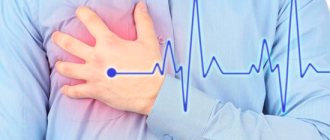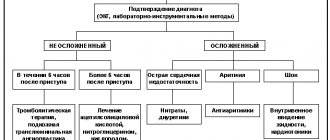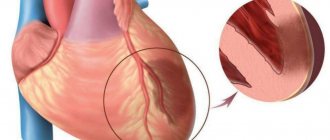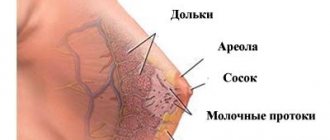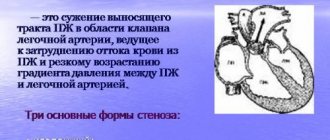Anemia is a pathological condition of the body, which is characterized by low hemoglobin levels and a decrease in the number of red blood cells in the blood. It occurs against the background of the development of a variety of diseases. These can be diseases provoked by viruses or bacteria, oncological pathologies, etc. Understanding what anemia is, it is necessary to undergo diagnostics in order to eliminate the problem in order to determine its causes and make a diagnosis.
Types and specific symptoms
The disease comes in several types and each of them has its own causes and symptoms.
Iron-deficiency anemia
- the most common type, occurs when there is a deficiency of iron in the body. Signs: shortness of breath during exertion, rapid heartbeat, tinnitus, pale and dry skin, cracks in the corners of the lips, brittle nails.
B12 and B9 deficiency anemia
— occur with a deficiency of vitamins B12 and folic acid. Signs: deterioration of mental activity, disturbances in the functioning of the central nervous system, unsteady gait, decreased sense of touch.
Hemolytic
- characterized by accelerated destruction of red blood cells, in newborns it occurs as a result of a conflict between the red blood cells of the mother and child.
Aplastic and hypoplastic anemia
- a disease associated with disruption of the hematopoietic function of the bone marrow.
Posthemorrhagic
- the result of blood loss. It can be acute (for injuries and operations) or chronic (for some types of internal diseases).
Sickle cell anemia
- the result of a genetic defect in which red blood cells take on a sickle shape. Signs are general weakness, increased fatigue, a tendency to form blood clots, pain in the joints and abdominal cavity.
Hereditary thalassemia
- the most severe type, caused by genetic disorders.
Each type is dangerous in its own way for humans, since iron deficiency negatively affects the functioning of all its organs.
Treatment of IDA
The basic principles of treatment for iron deficiency anemia include eliminating the cause of iron deficiency, correcting the diet, and replenishing iron deficiency in the body.
- The diet for iron deficiency anemia consists of eating foods rich in iron. Patients are advised to have a nutritious diet with the obligatory inclusion in the diet of foods containing heme iron (veal, beef, lamb, rabbit meat, liver, tongue). Plant foods rich in iron include beans, beans, lentils, peas, spinach, cauliflower, potatoes, carrots, beets, bananas, apricots, peaches, apples, blueberries, raspberries, strawberries, almonds and walnuts. It should be remembered that ascorbic acid, which is found in bell peppers, cabbage, rose hips, currants, citrus fruits, sorrel, enhances the absorption of iron in the gastrointestinal tract, and oxalates and polyphenols (coffee, tea, soy protein, milk, chocolate) worsen the absorption of iron. calcium, dietary fiber and other substances. However, no matter how much meat we eat, only 2.5 mg of iron will enter the bloodstream per day - this is exactly how much the body can absorb. And 15-20 times more is absorbed from iron-containing complexes - that’s why the problem of anemia cannot always be solved with the help of diet alone, and therefore iron-containing drugs are prescribed
- Oral iron supplements differ from other medications by special rules of administration: - short-acting iron-containing preparations are not taken immediately before or during meals. The medicine is taken 15-20 minutes after meals or in the pause between doses; prolonged medications (sorbifer durules, tardiferron-retard, etc.) can be taken before meals and at night (1-2 times a day); - iron supplements are not taken with milk and milk-based drinks (kefir, fermented baked milk, yogurt) - they contain calcium, which will inhibit the absorption of iron - tablets (except for chewable ones), dragees and capsules are not chewed, are swallowed whole and washed down with plenty of water, rosehip decoction or clarified juice without pulp Oral iron supplements (in tablets, drops, syrup, solution) are the initial treatment for mild to moderate anemia; if there is pregnancy, the intake is agreed with an obstetrician-gynecologist. The duration of treatment is 4–8 weeks until hemoglobin levels normalize, then the drug is taken for 4–6 weeks at half the dose. The most commonly prescribed: - sorbifer durules/fenuls 100 mg, 1-2 tablets 1-2 times a day until hemoglobin levels are restored (in pregnant women, for prevention, 1 tablet 1 time a day, for treatment, 1 tablet 2 times a day) - ferretab comp . 1 capsule per day, up to a maximum of 2-3 capsules per day in 2 divided doses, minimum period of use is 4 weeks - maltofer/actiferrin comes in three dosage forms (drops, syrup, tablets), intake 40-120 drops/10-30 ml syrup / 1-3 tablets per day in 1-2 doses - tardiferron 80 mg, 1-2 tablets per day, pregnant women 1 tablet per day, II-III trimester - totema (combined preparation of iron, copper and manganese) 2- 4 ampoules per day, solution diluted in 1 glass of water, taken for 3-6 months - ferlatum 15 ml 1-2 bottles per day in 2 divided doses
- Injectable iron preparations (venofer, likfer, cosmofer, ferrinject) are used exclusively in the hospital (it is necessary to have the ability to provide anti-shock care), contraindicated during pregnancy and lactation
- Hemotransfusion (transfusion of red blood cell-containing blood components) is performed in case of severe anemia, according to strict indications and in a hospital setting.
The severity of anemia is determined by the concentration of hemoglobin in the blood.
- 1st degree (mild) - the hemoglobin level is 20% below normal: 90 - 120 g/l, mild weakness, fatigue, and decreased concentration appear.
- Grade 2 (moderate) - hemoglobin is 20-40% below normal (70-89 g/l), shortness of breath, rapid heartbeat, disturbed sleep and appetite, tinnitus and frequent headaches.
- Grade 3 (the most severe) - hemoglobin is below normal by more than 40% (less than 70 g/l), signs of heart failure occur, treatment is recommended in a hospital.
Prevention and treatment of iron deficiency anemia
Diagnosis of anemia is based mainly on laboratory data, primarily on the results of a clinical blood test with determination of hemoglobin concentration.
According to WHO recommendations, the criterion for anemia for children is a decrease in hemoglobin concentration to a level of less than 110 g/l, for women - less than 120 g/l (during pregnancy - less than 110 g/l), for men - less than 130 g/l.
Based on the severity, anemia is classified into mild (blood hemoglobin level above 90 g/l), moderate (hemoglobin - 70–89 g/l) and severe (hemoglobin less than 70 g/l).
The most common (80–95% of all anemias) encountered in therapeutic practice is chronic iron deficiency anemia (IDA), a painful condition caused by impaired hemoglobin synthesis due to iron deficiency.
According to WHO statistics, about 2 billion people in the world suffer from some form of iron deficiency, most of them women and children. The incidence of IDA in pregnant women in the world ranges from 25 to 50%, in developing countries - from 35 to 75%, and in developed countries it is 18-20%. In ICD-10 it corresponds to category D50 - iron deficiency anemia.
Some features of iron metabolism in the body
In men, about 18 mg of Fe per day is supplied with food, 1.0–1.5 mg is absorbed, and Fe is lost in urine, feces, sweat, and the epithelium of the skin and intestines. In women, 12–15 mg of Fe per day is supplied with food, 1.0–1.3 mg is absorbed, Fe is lost in urine, feces, sweat, skin and intestinal epithelium, hair, nails, during the menstrual cycle, pregnancy and lactation. During the menstrual period, losses are 20–30 mg, during pregnancy, childbirth and lactation up to 700–800 mg.
When the body's need for iron increases, no more than 2.0–2.5 mg can be absorbed from food. If the body's loss of Fe is more than 2 mg/day, iron deficiency anemia develops after the depots are depleted.
The main reasons for the development of IDA include:
- Nutritional deficiency
Insufficient intake of iron from food, mainly due to a lack of meat products (for example, during fasting, vegetarianism), does not make it possible to replenish its losses resulting from the destruction of red blood cells.
- Iron malabsorption
It develops in patients with enteritis of various origins, malabsorption syndrome, postoperative conditions (gastric resection with exclusion of the duodenum, resection of the small intestine), and is also associated with taking medications that inhibit iron absorption.
- Increased need for iron
As a rule, it is caused by pregnancy, lactation, intensive growth during puberty, occurs during the premenopausal period and during the treatment of macrocytic (B12-deficiency) anemia with vitamin B12.
- Chronic blood loss of various locations
Chronic blood loss is caused by gastrointestinal (with reflux esophagitis, erosive and ulcerative diseases of the stomach, tumors of the stomach and colon, Crohn's disease, ulcerative colitis, diverticulitis, bleeding hemorrhoids), uterine (including heavy menstruation), nasal, renal (with glomerulonephritis , urolithiasis, tumors), gingival, closed cavities and tissues (isolated pulmonary hemosiderosis, ectopic endometriosis) bleeding.
The most common is posthemorrhagic iron deficiency anemia due to blood loss from the gastrointestinal tract. This blood loss is the most common cause of iron deficiency in men and the second most common cause in women.
- Impaired iron transport (hypoproteinemia of various origins)
The main pathogenetic mechanism for the development of IDA is a lack of iron in the body - the main building material for the construction of hemoglobin molecules, in particular its iron-containing part - heme.
Clinical manifestations of Fe deficiency manifest after a long latent period, corresponding to the depletion of Fe reserves in the body. The severity of symptoms may vary and depend on the cause, rate of blood loss, gender and age of the patient. The severity of the condition is due to a decrease in the oxygen-binding capacity of the blood and tissue iron deficiency.
Anemic syndrome is caused by tissue hypoxia, its manifestations are universal for all types of anemia:
- weakness and/or fatigue;
- pallor of the skin and mucous membranes;
- headache and/or throbbing in the temples;
- dizziness, fainting;
- shortness of breath and palpitations during habitual physical activity;
- increased anginal pain in ischemic heart disease;
- decreased tolerance to physical activity;
- the emergence of resistance to vasodilator therapy in ischemic heart disease.
Sideropenic syndrome is caused by tissue deficiency of Fe and is characteristic only of IDA. Main manifestations:
- dry skin, cracks on the surface of the skin of the arms and legs, in the corners of the mouth (angular stomatitis);
- glossitis, accompanied by atrophy of the papillae, soreness and redness of the tongue;
- fragility, thinning, splitting of nails, spoon-shaped nails (koilonychia);
- hair loss and early graying;
- perversion of taste (pica chlorotica): patients eat chalk, coal, clay, sand and/or raw foods (cereals, minced meat, dough);
- addiction to unusual odors (kerosene, fuel oil, gasoline, acetone, shoe polish, naphthalene, car exhaust gases), which completely disappears while taking Fe preparations;
- dysphagia (difficulty swallowing solid and dry foods).
Secondary immunodeficiency syndrome is a tendency to frequent relapses and chronicity of infectious and inflammatory diseases.
Visceral syndrome includes:
- damage to the gastrointestinal tract (glossitis, dysphagia, decreased acid-forming function of the stomach, sub- and atrophic gastritis, bloating, constipation, diarrhea);
- damage to the hepatobiliary system (fatty hepatosis, dysfunctional disorders of the biliary tract);
- changes in the cardiovascular system (shortness of breath, tachycardia, cardialgia, swelling in the legs, anginal pain, hypotension, expansion of the borders of the heart to the left, the presence of muffled heart sounds and systolic murmur at the apex, possibly a decrease in the T wave and depression of the ST segment on the ECG);
- damage to the central nervous system (decreased memory and ability to concentrate);
- damage to the muscular frame and sphincters (muscle weakness during normal exercise, mixed urinary incontinence in the absence of changes in urine tests).
The skin of patients with IDA is pale, not icteric; the liver, spleen and peripheral lymph nodes are not enlarged. With juvenile chlorosis, the sclera and sometimes the skin acquire a bluish tint. Such patients do not tan well in the sun; girls are often infantile, they often experience menstrual cycle disorders - from amenorrhea to heavy menstruation.
Laboratory diagnostics
The main laboratory criteria for IDA are:
- low color index;
- hypochromia of erythrocytes, microcytosis;
- decreased serum iron levels;
- an increase in the total iron-binding capacity of serum and a decrease in serum ferritin levels.
After establishing the presence of anemia and its severity, it is necessary to find out the cause and source of bleeding.
To do this, it is necessary to conduct a number of studies. Key studies include:
- endoscopic examination of the gastrointestinal tract (FGDS, colonoscopy, possibly with biopsy);
- feces for occult blood;
- gynecological manual and ultrasound examination in women;
- examination of the urinary system (general urine analysis, ultrasound of the kidneys, cystoscopy);
- X-ray examination of the chest organs;
- examination of sputum and bronchial washings for hemosiderin, atypical cells and mycobacterium tuberculosis.
In the absence of data indicating an obvious erosive-ulcerative process, an oncological search should be carried out.
Treatment
The goals of treatment for IDA are:
- elimination of the cause that caused it (identification of the source of bleeding and its elimination, restoration of the process of Fe absorption);
- replenishment of Fe deficiency in the body;
- preventing the development of dystrophic changes in internal organs and maintaining their full functional capacity.
Diet
It is impossible to eliminate IDA with diet alone, since the absorption of Fe from food is no more than 2.5 mg/day, while 15–20 times more is absorbed from medications. However, for patients with IDA, foods containing sufficient amounts of well-absorbed protein and Fe are recommended. Meat products contain Fe, which is part of heme (heme Fe), which is absorbed by 25–30%. Fe contained in hemosiderin and ferritin (liver, eggs, fish) is absorbed by 10–15%, and in products of plant origin (legumes, soybeans, spinach, dill, lettuce, apricots, prunes, bread, rice) Fe is absorbed by 3 -5 %.
Taking large amounts of apples, pomegranates, carrots, beets, and buckwheat is not justified from the point of view of limited absorption of Fe ions from them.
People who eat meat get more heme iron (in myoglobin) than vegetarians. Strict vegetarians may develop iron deficiency over time because vegetables and grains contain substances that interfere with iron absorption, particularly phosphates.
It should be borne in mind that a diet that is complete and balanced in terms of the main ingredients can only “cover” the body’s physiological need for iron, but does not eliminate its deficiency, and should be considered as one of the auxiliary components of therapy .
Blood transfusions are performed in patients only for health reasons, and the indication is not the Hb level, but the general condition of the patient and hemodynamics. Most often, they resort to blood transfusions (transfusions of red blood cells) when Hb drops below 40–50 g/l.
Drug therapy for IDA
It is carried out only with Fe preparations, mainly oral, less often parenteral, for a long time, under the control of a detailed blood test. The rate of recovery of red blood counts does not depend on the route of administration.
The basic principles of treating iron deficiency anemia with oral Fe preparations include:
- prescription of Fe preparations with sufficient content of divalent Fe2+ (200–300 mg/day);
- when using new forms, one should focus on the average therapeutic dose;
- prescribing Fe preparations together with substances that enhance their absorption (ascorbic and succinic acid);
- avoid simultaneous intake of substances that reduce Fe absorption (antacids, tannin, oxalates);
- use medications that do not contain vitamin components (especially B6, B12);
- convenient dosing regimen (1–2 times/day);
- good bioavailability, absorption, and tolerability of Fe preparations;
- sufficient duration of therapy for at least 6–8 weeks until hemoglobin levels normalize;
- continue taking half the dose for another 4–6 weeks after hemoglobin levels normalize;
- It is advisable to prescribe short monthly courses of therapy (3–5 days) at an average therapeutic dose to women with polymenorrhagia.
The criterion for the effectiveness of treatment with iron supplements is an increase in reticulocytes (reticulocyte crisis) by 3–5 times on the 7–10th day from the start of therapy (not always recorded during a single control).
Fe preparations are classified into: ionic ferropreparations, which are salt or polysaccharide compounds of Fe2+, and nonionic compounds, consisting of a hydroxide polymaltose complex of trivalent Fe3+.
Fe sulfate, included in monocomponent and combined ferropreparations, is well absorbed (up to 10%) and tolerated by patients. Fe chloride compounds are absorbed less well (up to 4%) and have more undesirable effects: metallic taste in the mouth, darkening of teeth and gums, dyspepsia.
Currently, preference is given to preparations containing divalent iron (they are better absorbed in the intestines compared to ferric iron preparations), the daily dose of which is 100–300 mg. You should not prescribe more than 300 mg Fe2+ per day, because its absorption does not increase.
It should be taken into account that a number of substances contained in food products - phosphoric acid, salts, calcium, phytin, tannin (therefore it is not recommended to take iron supplements with tea, coffee, Coca-Cola) - inhibits the absorption of iron. The same effect is observed with the simultaneous intake of ferrous iron from certain medications, such as Almagel, magnesium salts.
Indications for parenteral administration of Fe :
- impaired intestinal absorption (intestinal resection, malabsorption syndrome), extensive ulcerative surfaces;
- absolute intolerance to oral Fe preparations;
- the need for rapid iron saturation (emergency surgery);
- treatment with erythropoietin, when the need for Fe increases sharply, but for a short time (2–3 hours after administration of erythropoietin) due to its active consumption by erythrocytes.
With parenteral administration, in case of an incorrect diagnosis, hemosiderosis with multiple organ failure may develop. More than 100 mg/day should not be administered parenterally.
Prevention of IDA should be carried out in the presence of hidden signs of Fe deficiency or risk factors for its development. The study of Hb and serum Fe should be performed at least once a year, and in the presence of clinical manifestations as necessary in the following categories of patients:
- donors (especially women) who regularly donate blood;
- pregnant women, especially those with frequent repeat pregnancies due to IDA;
- women with prolonged (more than 5 days) and heavy bleeding;
- premature babies and children born from multiple pregnancies;
- girls during puberty, with rapid growth, intense exercise (growing muscle mass absorbs a lot of Fe), with limited meat products in the diet;
- persons with constant and difficult to eliminate blood loss (stomach, intestinal, nasal, uterine and hemorrhoidal bleeding);
- patients taking NSAIDs for a long time;
- persons with low material income.
Treatment of anemia
Effective treatment is impossible without accurate diagnosis and identification of the cause of anemia.
Examination methods:
- anamnesis;
- general blood analysis;
- blood chemistry;
- general clinical urine test;
- CT scan;
- endoscopy;
- rectoscopy;
- Ultrasound (for women).
At the medical office, you can get qualified advice from a therapist and carry out all the necessary tests and any additional tests on site.
Share the article on social networks:


